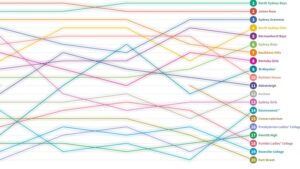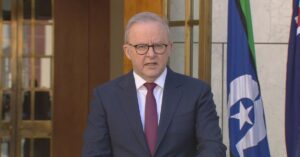
Australians could soon face higher costs for groceries and fuel due to an “experimental change” to the nation’s company tax system, according to some of the country’s most influential business leaders. They have launched a fierce critique of a proposal that the Productivity Commission believes could enhance the nation’s living standards.
The proposal, which suggests a 5 percent cashflow tax on all businesses, has been described as Treasurer Jim Chalmers’ potential “Paul Keating moment.” However, it has met with significant opposition from a coalition of organizations, including the Business Council, the Insurance Council, the National Farmers’ Federation, the Minerals Council, and the Tech Council of Australia.
Business Opposition to Tax Overhaul
On Friday, the Productivity Commission released its recommendations to reform the company tax system. The plan involves reducing the current 25 and 30 percent tax rates to 20 percent for all firms with a turnover of less than $1 billion. While the cashflow tax would apply to all companies, its impact could be mitigated by businesses that invest more in new technology, equipment, and buildings.
Despite these potential benefits, the proposal has been met with resistance from major business organizations, which argue that the changes could lead to increased grocery prices. A spokesperson for the Business Council stated, “This tax reform could have unintended consequences on everyday Australians, driving up costs for essential goods.”
Historical Context and Comparisons
The current debate echoes past tax reform challenges in Australia. The reference to a “Paul Keating moment” alludes to the former Prime Minister’s bold economic reforms in the 1980s, which were initially controversial but ultimately credited with modernizing the Australian economy. Treasurer Chalmers faces a similar crossroads, where bold action could either propel or hinder economic growth.
Historically, tax reforms have been contentious, often facing pushback from various sectors concerned about immediate financial impacts. The proposed cashflow tax aims to encourage investment, but critics are wary of its potential to disrupt current business operations and consumer pricing structures.
Expert Opinions and Economic Implications
Economists are divided on the proposal’s potential impact. Dr. Sarah Thompson, an economist at the University of Sydney, suggests that while the reform could spur long-term investment, the short-term effects might be challenging for consumers. “The transition to a new tax model could lead to temporary price hikes, which would affect household budgets,” she noted.
Conversely, some experts argue that the reform could lead to a more dynamic economy. “Encouraging businesses to invest in technology and infrastructure is crucial for future growth,” said Professor Mark Evans from the Australian National University. “However, the government must ensure that these changes do not disproportionately affect small businesses and consumers.”
Looking Ahead: Potential Outcomes and Next Steps
The debate over the proposed tax reform is likely to continue in the coming months, as stakeholders weigh the potential benefits against the risks. The government will need to engage with business leaders and economists to refine the proposal, ensuring it aligns with broader economic goals without imposing undue burdens on consumers.
As the discussion unfolds, Treasurer Chalmers will need to navigate the complex landscape of economic reform, balancing the need for innovation with the realities of market dynamics. The outcome of this debate could significantly shape Australia’s economic trajectory in the years to come.






